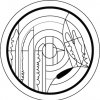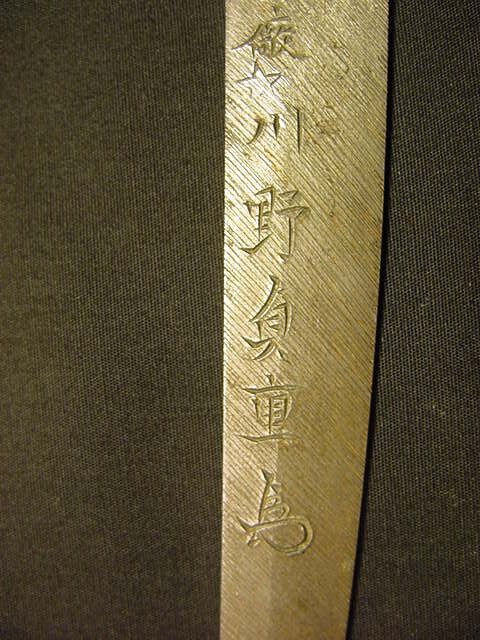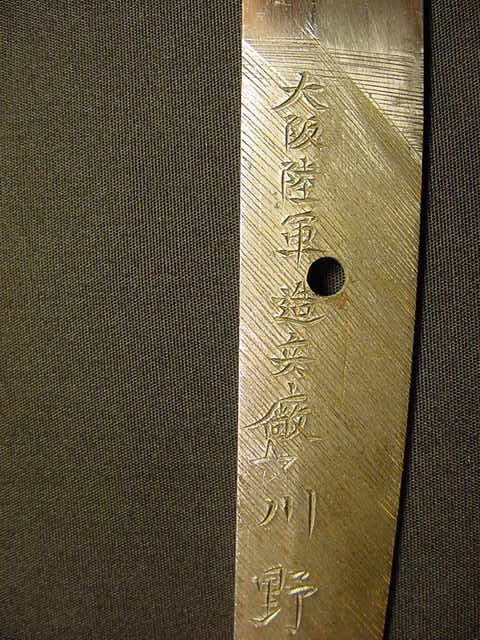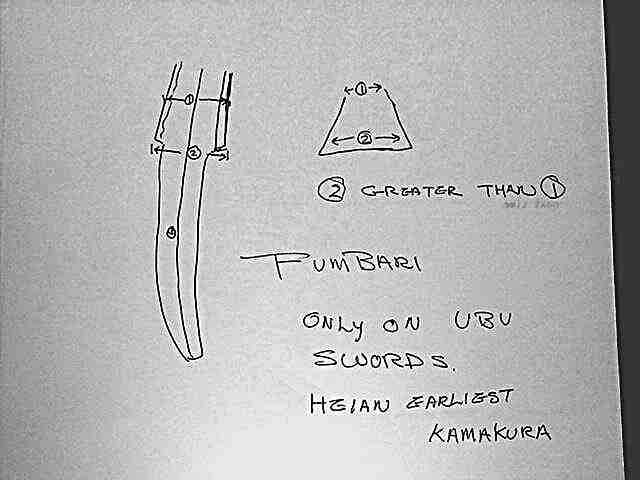-
Posts
995 -
Joined
-
Last visited
-
Days Won
12
Content Type
Profiles
Forums
Events
Store
Downloads
Gallery
Everything posted by Ted Tenold
-

The Digital Shinsa...its around the corner
Ted Tenold replied to Adrian S's topic in General Nihonto Related Discussion
I think this is a good subject and would like to see the discussion carry. Although I hope not to poke the Hornet's nest, I would like to present points of consideration; There is an clear difference in both steel appearance and forging characteristics between the Koto and subsequent Shinto periods. We do know that foreign steels began their major integration at about the same time. Is it reasonable to presume that foreign forging methods and materials may also have been concurrently introduced and integrated ? I can't seem to find it at the moment, but the NBTHK discussed the subject of some contemporary smiths using steels other than Tamahagane during production. These alternative sources were being implemented as a measure of "flavoring" to promote attractive aesthetic elements to the end result . If I remember correctly, one of the steels mentioned was Swedish Steel, which has a reputation in the industry for being very pure. How would this be clearly isolated and or identified when it blended with pure Japanese steel? How could/would it affect the reading? The only time I've ever seen borax employed in the forging process was to attach the handle to the plate (teko) prior to stacking the tamahagane fragments on top of it. I believe borax and other fluxing agents have a place in the forge, but they neither extremely rare, nor a wholesale application. Like everything else, it's a tool with a specific task, utilized within a particular criteria, to achieve a desired result. I remember reading a very old story translated for me by a friend in Japan when I was researching Shikkake Norinaga. In the story, Norinaga was described as using rice hulls instead of pine charcoal for fuel during heating of the blade. While we can challenge the validity of the story as just a story, it is very curious that it was mentioned as a major part of the story and we must consider that there may be some measure truth to it. Who among the sword community has heard of such an alternative. While the processes are generally the same, the details, materials, and methods can vary in ways that leave visial traces in the individual works that may be unexplainable anomolies in elemental examinations. While interesting, I tend to think the data that such a test yeilds will be of limited value in the context of "kantei". Like most things in science, the answer to one question leads to three more questions. In light of the lack of any period "control" specimens of absolute known composition, origin, working methods, etc., data will be somewhat blurred by those details that cannot be absolutely established. We can't ask a smith from Keicho what he used. Heck, Suishinshi Masahide was exploring the craft for answers he didn't even have, and 200 more years have elapsed since. We're still grasping for answers of origin dates, developmental dawnings, and whether there were one or two generations of a particular smith, and now we're going to identify if, and what kind, of flux was used? Again, all very interesting, but even if one particular smiths work is uniformly tested, the data should be examined and held in the context it is; subjective. -

A LITTLE ASSISTANCE, PLEASE
Ted Tenold replied to Grey Doffin's topic in General Nihonto Related Discussion
Post War Showa Period tchotchke. Somewhere in Japan, likely Seki city. Tourists...for opening their mail upon return from vacation in Japan. Under 5.9 inches, so it's exempt from Jutoho laws and thus can be purchased over the counter at a "Tchotchke-Ya" or cutlery shop, tossed in the luggage and carried home. Well... at least we used to be able to casually toss stuff like this in the luggage. -
Cyrus is in the L.A. area.
-

1st Century Broadsword? Thoughts
Ted Tenold replied to Phenomena's topic in Auctions and Online Sales or Sellers
My eyes....my beautiful eyes!!!! -
Date is Meireki Gannen. 1655
-
I'll concur with Grey and Chris. Searching outside Ebay can yeild some very good pieces in the price vacinity. The consistency of quality with which the Yasukuni and Minatogawa smiths produced swords makes for a better reputation, and overall chance of getting a nice piece if it's not in good polish. Plus, all these guys were coming from long established lines of swordsmiths with a fair amount of comingling between them and their students. I'd also add to Roy's comment in that Nagamitsu blades tend to run a wide gammut in quality of forging, heat treating, and shaping. I've seen more than a few that had yakiba that were hajimi, sleepy, or just plain nioi-giri. Buying them on based on on-line images in poor wartime polish can be risky. Hedging the risk by buying form a supportive seller is optimal. On the other hand I've see a few that were very nice too, and one with hada that was actually garrish. I think the price of swords like Mantetsu, Nagamitsu and Emura were originally fueled by those that wanted good cutting swords, i.e. practitioners, and the background stories of the makers. It seems lately that the Militaria collectors are driving the prices of these swords now as the pool of nicer examples gets shallower over time. I bought my first Nagamitsu in *mint* mounts, and it was a nice blade too, for $250.00.
-
The microdear clothes (as Ray linked) are excellent, and with good care will last many years. They're also good for handling nice tsuba and such, though I keep a seperate one for that one. They will strip a great deal of the oil from a blade so one could keep a seperate one for that too. The larger sized ones are pretty big, so they can be cut into a couple pieces or folded over themselves a few times for rotation to a fresh part. I maintain them by washing periodically in cold water with Woolite, rinsing thoroughly then hang dry. They're probably dryer safe, but I just hang them.
-
As a further comment on the subject; When concerning a sword of Tokubetsu Juyo level where no viable signed examples by that maker are known to exist, it is the policy of the NBTHK to add "den" to the certificate regardless if the sword was attributed directly at the Juyo level. A good example of this would be a smith such as Go Yoshihiro. Thus, the den classification is not detrimental to the judgement of the work and I seriously doubt any real diminishing factor of value either.
-
More like P-Funkadelic. George Clinton gives two thumbs up!
-
If I remember correctly, Kongobyoe Moritaka didn't make blades through the entire war. He was called to service and the last blade he made during the war was the one he carried with him. After the war he resumed his trade. Lovely work! *apologies for the continued off topic...*
-
Removing an undoubtedly bad signature is a matter of making the blade "honest". But removing a questionable one is only something that should be pursued after it is researched diligently, especially so if the work looks adequately correct for the signed maker. This includes submitting to shinsas to confirm or deny it. I once saw a tanto signed Nobukuni that was sent through and judged gimei. The mei was removed and the nakago respectably restored. It subsequently passed as a mumei to....yes.... Nobukuni. Work is work but a false signature is a blemish. Better to leave it, or remove it? I think it depends on the overall work, health of the piece, and the effect it has on it. As an example, would this be better as is, or just taken off completely?? The problem becomes complicated with different periods. While this is easier to accept in a Koto piece, the later the period, the more unpalatable it becomes. A Shinto gimei is disappointing, but tolerable if the work is judged to a high ranking smith once resubmitted as a mumei. Shinshinto mumei are very disappointing and though the work may be excellent, the lack of a mei casts them in a low appeal. Gimei Gendaito are pretty much a travesty as a mumei gendaito is either illegal, junk, flawed, or of little worth because of a lack of mei. Each sword has to be judged individually. Moreover, a mei should never be removed without due diligence. I would also point out that a good removal of a mei isn't a matter of just filing or grinding off a signature. The metal should be preserved by closing the mei up through techniques of manipulation and displacement. Metal removal should be very minimal. Mei can also be filled if required, much like umegane repairs in a blade. Time consuming and expensive, but for the right blade, a dignified approach. **Franco posted while I was writing this, and I agree. Jim's approach to things like this were, and still are, good advice.
-
I had this on file, so I thought I'd post it. So far, it's the only example I've seen of a Sadashige with both his monogram and a star stamp. It is dated December, 1944.
-
Can't tell which Hon'ami, but the attribution looks like maybe Tadanaga to me.
-
Taking the well traveled road: Kanemoto Picking a lane, I'd say: Magoroku The small and sparse nie, in conjunction with the soft peaks in the pattern and how close the tani (valleys) come the edge makes sense for Magoroku. Not really clear in the images, but the boshi would help too. The nakago jiri also says Magoroku. Other makers did occasionally work in Sanbonsugi though. Can't remember the smith off the top of my head, but I recall an early Shinto maker did this kind of work too, but this jigane doesn't fit there.
-

I'd appreciate any translation assistance
Ted Tenold replied to wreddekopp's topic in Translation Assistance
It's older than many of us, but not old for a Japanese sword. World War II era. Seki ju Ishihara Yoshisada saku. You'll find an oshigata of this maker at http://home.earthlink.net/~ttstein/index.htm . -

Mr.Slough's Oshigata book.
Ted Tenold replied to k morita's topic in General Nihonto Related Discussion
Morita-san, I also tried to contact him last year. I reached a friend of his who told me that Mr. Slough has not been in contact for quite some time, and is not actively involved with Nihonto at the moment. This was perhaps due to some personal issues he was experiencing. -
Not how I learned it, but I'd agree that the kasane also has distal taper. distal: farthest from the point of attachment.
-
From the images, I would suspect it to be both tired and saiha based on; 1) Loose kitae 2) Dead jigane 3) Dim sugu hamon 4) Altered hamachi 5) Apparent shirake in places Could go many directions on period, but seems moot looking at images anyways, but in respect to the thread subject there looks to be some masame in the shinogiji. Sue-Koto Mino or Early Shinto.
-
Jan, No, the sword you illustrated is o-suriage which would mean any funbari has been long since lost. What many would define funbari as the difference in width from base to tip, is more accurately defined as "distal taper". The percentage of distal taper varies in conjuction with widths depending on the maker and period and is subsequently disturbed by centuries of damage, repair, alteration, polishing, etc.. Mathematically speaking the Sakihaba is a percentage of the Motohaba in width. Yoshindo Yoshihara explained that the percentage for good balance and appearance is around 70%. In other words, a sword with a motohaba of 3.2 cm would have sakihaba of 2.24 cm by this factor. If we did have a perfectly healthy Heian blade to measure from, this calculation would also be difficult to apply to because healthy funbari "flares" at the machi to about 1 inch or so above it, settling into a more uniform taper through the rest of the blade. I have seen funbari reproduced in utsushimono, such as one by Shibata Ka, who was both avid student and wealthy collector with access to many fine swords to study. Here's an illustration of funbari. As a Heian/Kamakura feature, it's little wonder many folks don't know what it really looks like. Even a slight suriage or machi okuri would remove it. Extant works that are ubu will display funbari which can be seen, but in diminished form.
-

Contact info for Harry (Afu) Watson
Ted Tenold replied to Ted Tenold's topic in Translation Assistance
Much obliged gents, thanks! -
Hi All, Seems my contact info for Harry is no longer correct. Can someone please PM or email me current contact info? Email or phone, etc? Thanks, Ted
-

Photos from the other side of life
Ted Tenold replied to Henry Wilson's topic in General Nihonto Related Discussion
Since this thread, like Major Tom, is floating in a most peculiar way... I'll offer some words from the genius of Douglas Adams; "In an infinite universe, the one thing sentient life cannot afford to have is a sense of proportion." :lol: -
Craig, I too am sorry to hear of your difficulties. I always admire anyone with the tenacity and strength to schlep so many books to a show! :lol: I agree with Ed that with the right help and treatment, it can be managed. My uncle has this condition which was a product of his long career in the upholstery business inhaling small fabric fibers for decades. All my best wishes to you for better health and resolution to your financial issues. As Thoman Paine wrote; "These are the days that try men's souls". I do hope to see you at a show in the future, with or without your books. Cheers, Ted
-
Interesting blade indeed. Jumyo works do seem to run a wide gammut, but on average tend to look stereotypical Mino. I had one paper a couple years ago that was an early Jumyo (Muromachi period) and at first glance looked very yamashiro and even had elements of Ayasugi with utsuri. Very unusual and kind of majiwari, but in line with works from that period when I further researched it. As far as the definitions and terminologies of hada, many special terms are generally associated with groups or smiths that most used them. Additionally, there's elements such uniformity, jinie, chikei, etc., that support their appearance in ways that are fairly specific. Ayasugi = Gassan and Naminohira Matsukawa = Norishige (Etchu province) Chirimen = Aoi Groups (Bitchu province) Konuka = Hizen Tadayoshi Uzumaki = Naotane Nenren = Sa school As for the subject sword, I would not call it Matsukawa, but mokume with itame. The oshigata provided illustrates what classic matsukawa hada should resemble. Just my two cents.
-

TV series needs the name of a 19th century Tosho/Swordsmith
Ted Tenold replied to SimonTV's topic in Nihonto
Yes, and I feel I may have been the first to trod, and it was not my intention. Welcome Simon, and thank you for taking an interest. There was a production about Masamune done some years back also. I was asked for recommendation of a person that was knowledgeable about Masamune and his students, spoke English, but also that was perferrably not in Japan (due to travel costs and budgetary constraints). I recommended Bob Benson since he has studied Soshu den for decades and obviously fit the other qualifications. Bob was never contacted, but the production somehow hooked up with a rather notorious fellow of dubious reputation in the San Francisco area. Those in the area that have had to contend with him will know of whom I speak. Very disappointing. "If you must choose....chose wisely".





